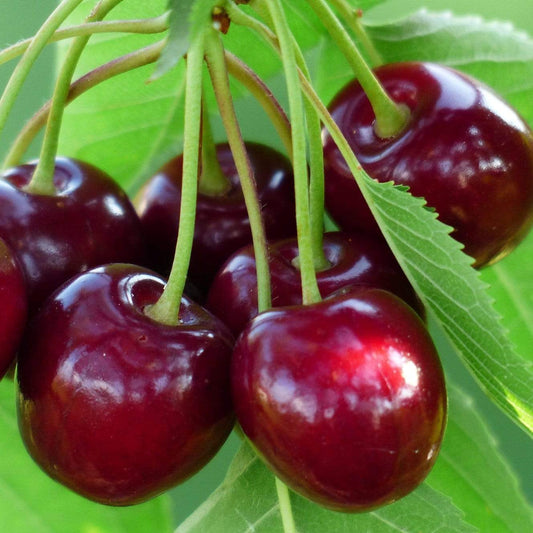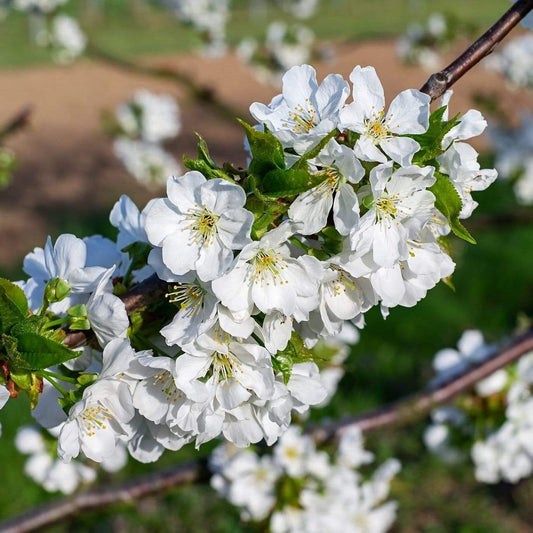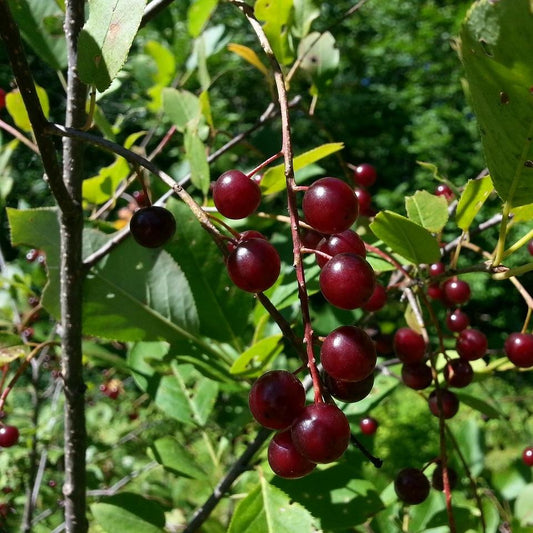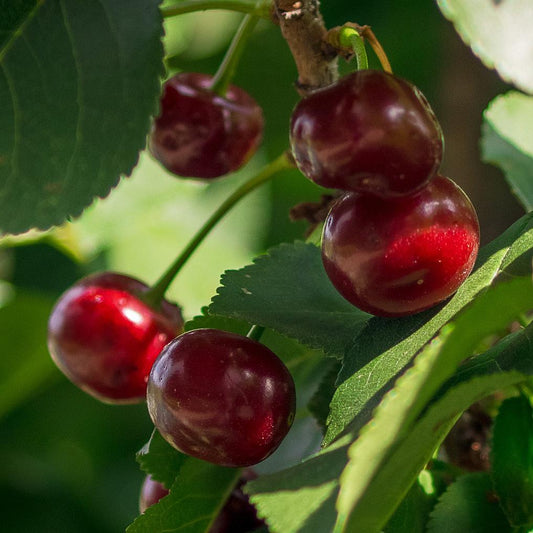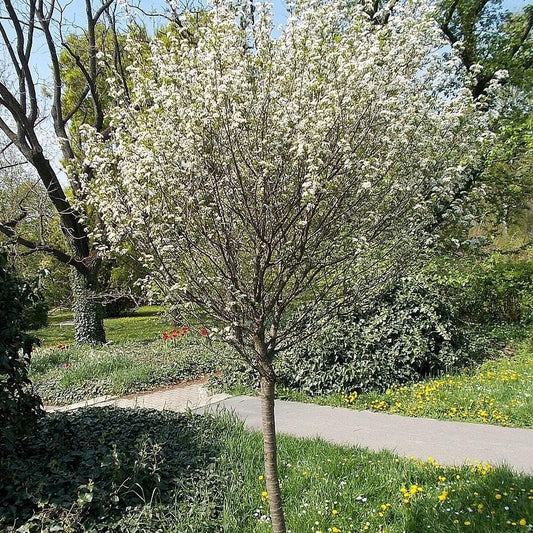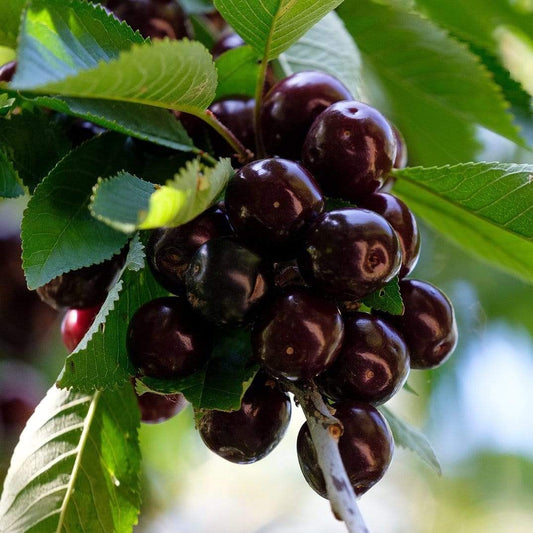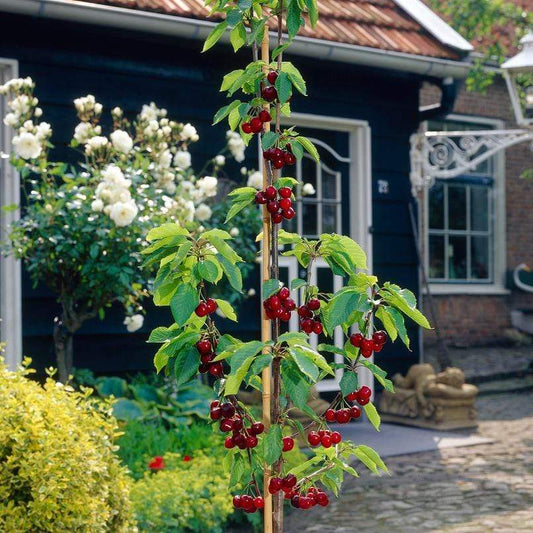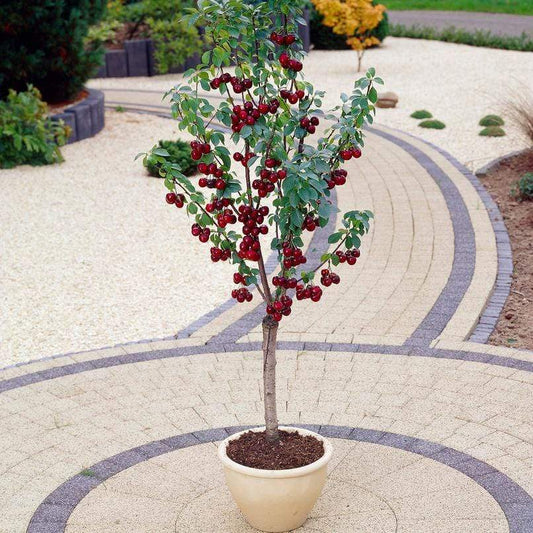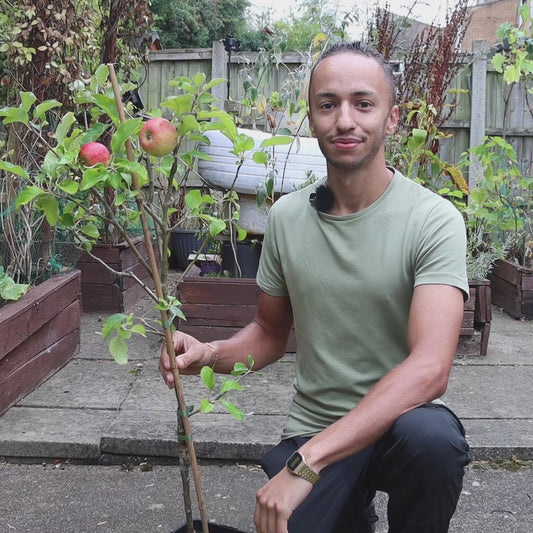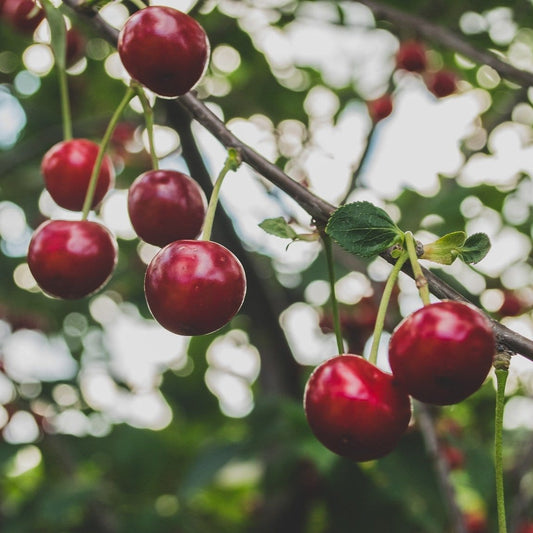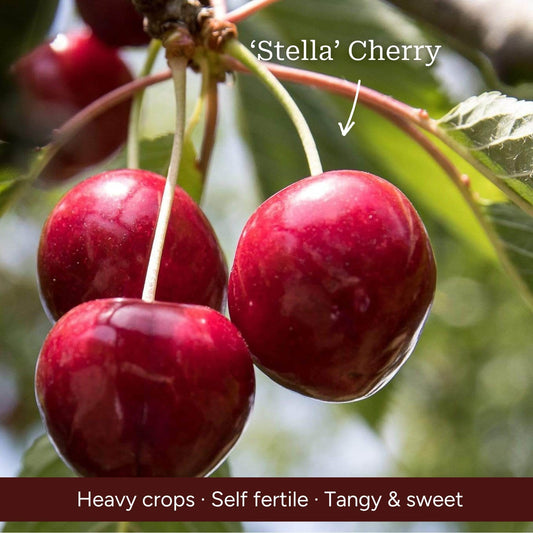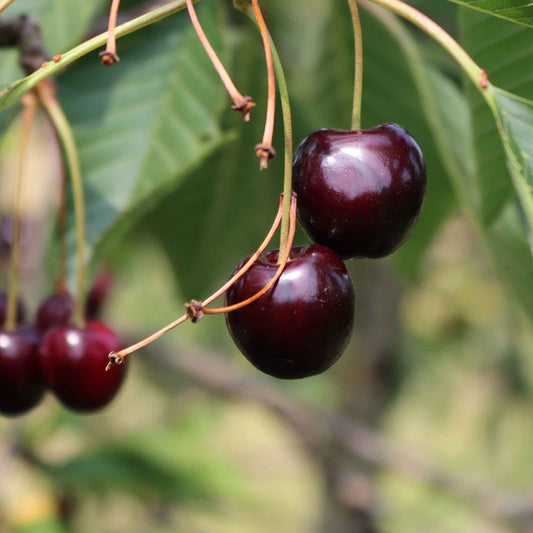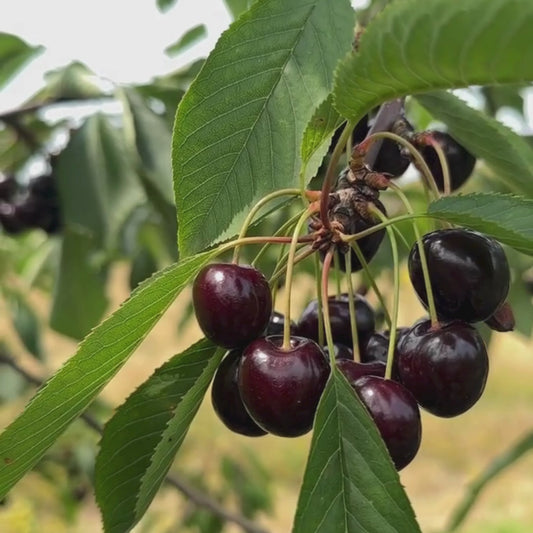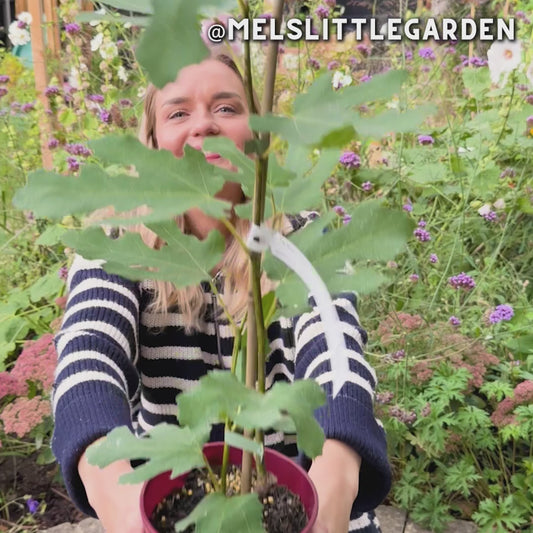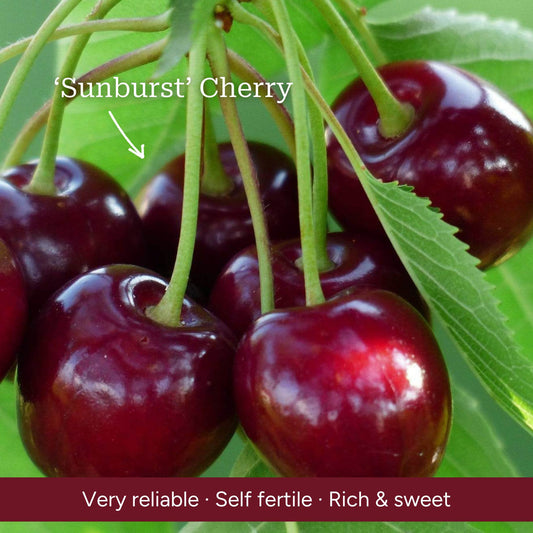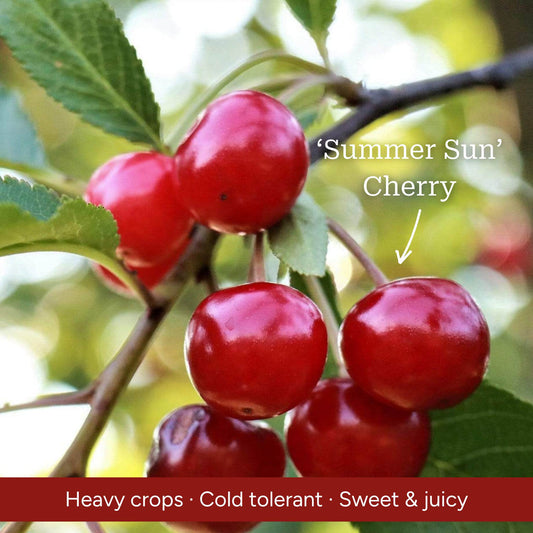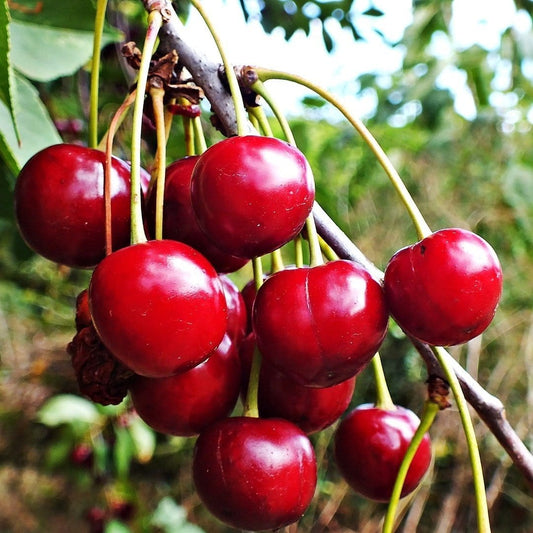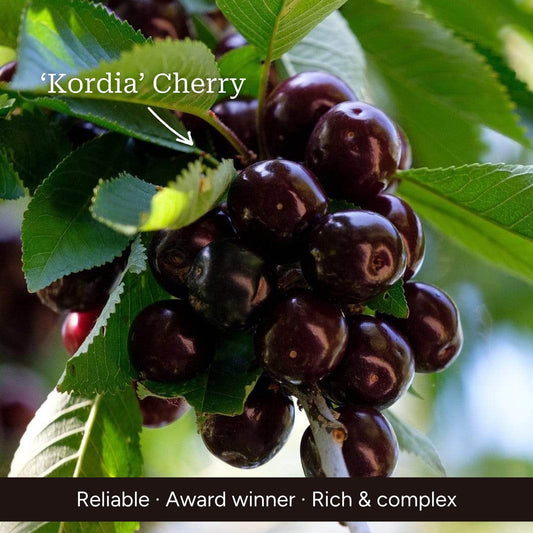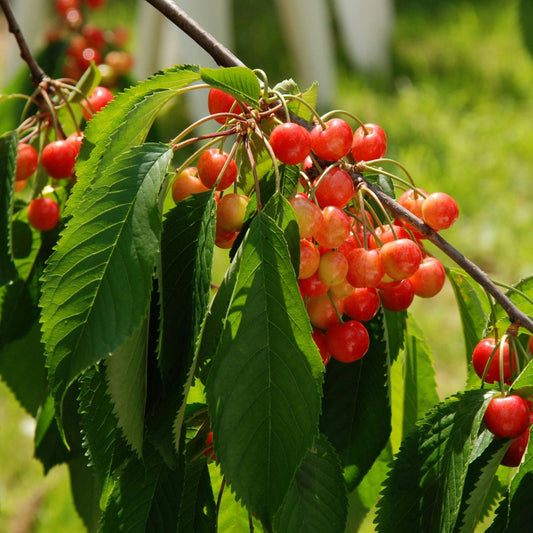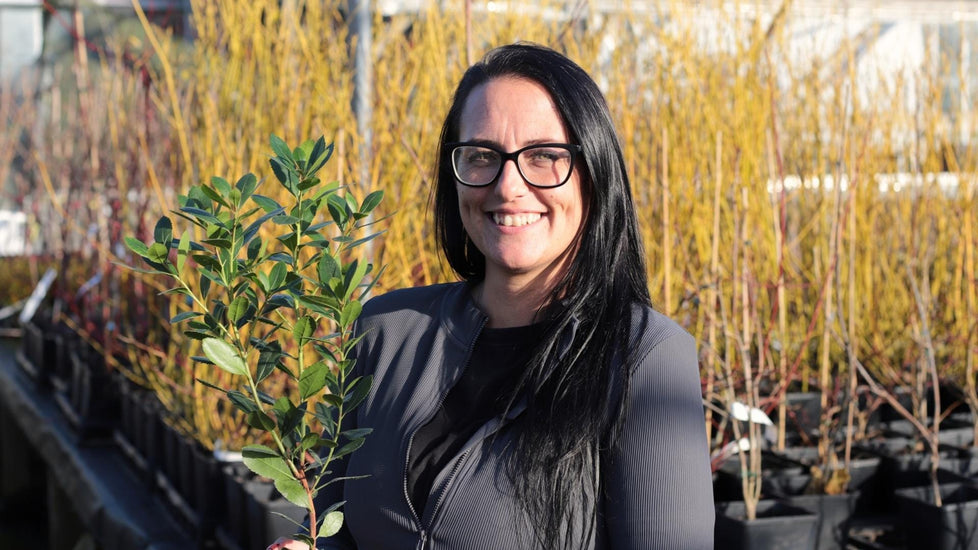Collection: Cherry Trees
Every garden should have a cherry tree for their irresistible fruit and beautiful blossom. They’re easy to care for and some varieties are even suitable for growing in patio pots. Our premium, bush-trained trees are grown with oodles of love at our Vale of Evesham nursery. Hardy, productive and absolutely delicious! What's not to like?
Need help picking?-
Regular price From £28Regular price
£32Sale price From £28'Sunburst' Cherry Tree
A superb dark cherry
- Decadent and devilishly rich
- Self fertile (doesn't require a partner)
- Ideal for morning smoothies
- Harvest from mid-July
2 options available
-
Regular price From £30Regular price
£40Sale price From £30'Stella' Cherry Tree
A familiar old favourite
- The perfect balance of sweet and tart
- RHS Award of Garden Merit winner
- Serve with ice cream and dark chocolate
- Harvest from late July to August
2 options available
-
Regular price From £30Regular price
£40Sale price From £30'Morello' Cherry Tree
Make the ultimate cherry pie
- The best sour cooking cherry
- RHS Award of Garden Merit winner
- Perfect for a black forest gateau!
- Harvest from late July to August
2 options available
-
Regular price From £38Regular price
£40Sale price From £38Lapins 'Cherokee' Cherry Tree
Late-cropping, Canadian variety
- Aromatic flavour after the initial sweet hit
- RHS Award of Garden Merit winner
- Two words: cherry scones
- Harvest in July (freezes well)
1 option available
-
Regular price From £32Regular price
£40Sale price From £32'Kordia' Cherry Tree
The darkest of all cherries
- Fantastic depth of flavour with a sharp edge
- RHS Award of Garden Merit winner
- Rustle up a divine cherry pie
- Harvest throughout July
1 option available
-
Regular price From £80Regular price
£105Sale price From £80Mini Orchard Collection | Cherry, Pear & Plum Trees
Fruit all summer long
- Sweet and juicy fruits for eating and cooking
- Compact trees suitable for any size of garden
- Devour straight from the branches
- Harvest from July to October
1 option available
-
Regular price From £30Regular price
£40Sale price From £30'Summer Sun' Cherry Tree
The most reliable UK cropper
- Sweet with no bitterness
- RHS Award of Garden Merit winner
- The perfect sundae topper
- Harvest from mid-July
1 option available
-
Regular price From £35Regular price Sale price From £35
Patio Cherry Tree
Small in stature, big on impact
- Expertly grown to keep nice and small
- Includes disease-resistant varieties
- Eat from the tree, bake in pies and cobblers
- Flavourful cherries, fantastic flowers
1 option available
-
Regular price From £70Regular price
£105Sale price From £70Award Winning Patio Fruit Tree Collection | Cherry, Pear & Plum
Our growers' best picks for pots
- Grow your own fruit on a balcony or patio
- RHS Award of Garden Merit winners
- Easy care, heavy cropping and flavourful
- Harvest from July to October
1 option available
-
Regular price From £32Regular price
£40Sale price From £32'Sasha' Cherry Tree
Big cherries, big flavour
- Sweet, aromatic and full of juice
- Self fertile (doesn't require a partner)
- Cherry bakewells like you've never had before
- Harvest from mid-July
1 option available
-
Regular price From £80Regular price
£115Sale price From £80Classic British Orchard Collection | Apple, Cherry, Pear & Plum Trees
All the traditional UK faves!
- Iconic orchard varieties
- Features RHS award winners
- Well-suited to UK growing
- Produce a glut of delicious fruit
2 options available
-
Regular price From £32Regular price
£35Sale price From £32'Regina' Cherry Tree
The queen of cherries
- Flavourful with punchy sweetness
- Excellent resistance to cracking
- Upside-down cherry cake, anyone?
- Harvest in August
2 options available
-
Regular price From £32Regular price
£45Sale price From £32'Merchant' Cherry Tree
One of the tastiest varieties
- Delectably sweet
- RHS Award of Garden Merit winner
- Dip in chocolate fondue
- Harvest from mid-July
1 option available
-
Regular price From £35Regular price Sale price From £35
Cordon Cherry Tree
Great yields in half the space
- Expertly grown in a columnar shape
- Includes both sweet and sour cherries
- Use in crumbles, cobblers and conserves
- Flavour-packed fruit, fab flowers
3 options available
-
Regular price From £95Regular price
£110Sale price From £95The 3 Best Fruit Trees for Small Gardens | Apple, Cherry & Fig
Tight on space? Not a problem
- Chosen for outstanding flavour
- Reliable and easy to grow
- Compact varieties suitable for pots
- Pick fruit from July to September
1 option available
-
Regular price From £55Regular price
£67Sale price From £55Cordon Cherry and Plum Trees | Perfect Partners
Big flavours from limited spaces
- Columnar cordons are ideal for small gardens
- Two incredibly flavourful varieties
- Productive trees you can grow in pots
- Loved by pollinators
1 option available
-
Regular price From £52Regular price
£62Sale price From £52Cherry and Plum Trees | Perfect Partners
The ultimate stone fruit trees
- Grow your own delicious cherries and plums
- Flavourful, easy to grow and beautiful
- Eat fresh or use in baking and desserts
- RHS Plants for Pollinators
1 option available
-
Regular price From £52Regular price
£62Sale price From £52Cross Pollinating Cherry Trees | Perfect Partners
Improve your cherry yields
- These trees loveee each other!
- Cross-pollination can lead to better fruit
- Two of the very best varieties
- RHS award winners
1 option available
-
Regular price From £40Regular price Sale price From £40
'Karina' Cherry Tree
An incredibly reliable variety
- Bursting with juicy sweetness
- Self fertile (doesn't require a partner)
- Use in a chocolate and cherry roulade
- Harvest from mid-July
Currently out of stock
-
Regular price From £80Regular price
£102Sale price From £80Cross-Pollinating Cherry Collection | Kordia, Summer Sun & Sweetheart
The perfect trio for XL harvests
- Some of the finest-flavoured cherries
- Compact trees ideal for borders or pots
- Perfect for eating fresh or cooking
- Harvest throughout July and August
Currently out of stock
-
Regular price £85Regular price
£87Sale price £85Patio Cherry and Plum Trees | Perfect Partners
Your balcony's new best friends
- Stone fruit grown on the patio!
- Sweet, juicy, and oh-so moreish
- RHS award-winning varieties
- Loved by pollinators
Currently out of stock
-
Regular price From £40Regular price Sale price From £40
'White Heart' Cherry Tree
Fabulously sweet, white flesh
- Amongst the most flavourful cherries
- Unusual white flesh
- Bake a batch of cherry bakewells
- Harvest from August to September
Currently out of stock
South Downs National Park
Meet Danielle
110 years' expertise free with every tree
Danielle's nursery has been growing trees in the South Downs National Park for over a century, and it shows. Dug up and sent straight to your garden at between 18-36 months old, their quality rootstocks, expert pruning and natural pest control mean that these traditionally field-grown trees are the hardiest you can get.
Need help picking?

Which cherry tree?
Cherries can be harvested in early, mid or late summer, depending on the variety. For sweet eating cherries, choose Summer Sun, Stella or Lapins. For pies, jams and tarts, we recommend Morello or Kordia. Dwarfing varieties Stella and Hartland are perfect for growing in pots on the patio - choose a pot at least 45cm in diameter and position it in a sunny spot. Get more help deciding with our easy 4-step guide.

What's the deal with rootstocks for cherry trees?
The eventual size of a cherry tree depends on its rootstock, so this is an important thing to consider. A tree grafted onto Colt rootstock, for instance, will grow to between 3.5-5m tall, making it the best choice for large gardens and community orchards. A Gisela 5 semi-dwarfing rootstock, by contrast, means that your cherry tree will be much more compact at 2.4-3m. And don’t worry if your favourite is on the ‘wrong’ rootstock, as regular pruning can make any cherry tree fit your space.

Growers' tips for cherry trees
Cherry trees are ideally suited for the UK climate and need little care. They will benefit from an annual mulch and a potassium-rich feed in the growing season. Growing your cherry tree in full sun will give you more blossom and fruit, but they will also tolerate partial shade. Protect the delicate buds against late frosts with a horticultural fleece and prune annually to keep a neat shape. If you only want one tree, choose a self-fertile variety; partially self-fertile trees (like Summer Sun) will benefit from a pollination partner and non self-fertile trees (Kordia) will need one.

Using your cherries
Sweet cherries need nothing extra - just eat them fresh from the tree. Sour cherries need to be cooked to enjoy them, and can be made into pies, liqueurs and jams - black forest gateau is a must! Try making your crop into a traditional Bakewell tart or show them off in a clafoutis, but make sure you save some for breakfast - stir them into Greek yogurt with a swirl of honey or fold them into pancakes.
Cherry Trees FAQs
How do I plant a cherry tree?
Potted cherry trees can be planted all year round, while bare root cherry trees are planted while dormant over winter. See our full tree planting guide for all the info on positioning, digging, staking and watering your new tree.
Where do cherry trees grow best?
Cherry trees love full sun and will produce the most blossom and fruit in sunny spots, but they also tolerate partial shade. Grow in well-drained, slightly acidic soil against a sunny wall or fence. Dwarf cherry trees can also grow in pots.
Do cherries grow on trees?
Cherries do grow on trees. We divide these into fruiting cherry trees, which produce a tasty and edible harvest, and ornamental cherry trees, which produce berries best left to the birds and are instead valued for their blossom.
How tall will a cherry tree grow?
Our cherry trees are grafted to rootstocks that encourage fast-fruiting and limit growth to a manageable size for regular gardens. Most grow to an eventual size of around 4m tall and 4m spread, though dwarf varieties would reach at most 2m.
How fast do cherry trees grow?
Cherry trees are pretty fast growing. A standard cherry tree can grow between 30-60cm a year, while a dwarf variety may grow 16-20cm annually.
How long does it take for a cherry tree to bear fruit?
A cherry tree grown from a seed will take about 10 years to bear fruit. A grafted young cherry tree from Roots will bear fruit in about two years, with more substantial harvests by the fourth or fifth year.
Do I have to have two cherry trees to produce fruit?
Some cherry trees need a pollination partner to bear fruit, while others are self-fertile or partially self-fertile (though they, too, can produce more fruit with a partner). In built up areas it’s likely there will be another cherry tree nearby to pollinate yours, but if you have the space there’s no harm in getting two. Check each tree’s page to see if it needs a pollination partner.
What time of year do cherry trees produce fruit?
Cherry trees produce fruit in early, mid or late summer - check the product page of each variety to see when its harvest time falls.
Do cherry fruit trees blossom?
Yes, cherry fruit trees produce blossom in the spring which is pollinated to form the berries. Ornamental cherry blossom trees, however, are selected specifically for their spectacular blossom displays.
Is it safe to eat wild cherries?
Wild cherries in Britain are edible, although they may not be as sweet as cultivated varieties. Like all cherries, however, the pips contain cyanide so these shouldn’t be eaten and can be dangerous in large quantities. When foraging it’s important to know what you’re picking and don’t confuse wild cherries with any other poisonous berries.
Can you grow a cherry tree from a pit?
Technically you could grow a cherry tree from a pit, though it’s quite an involved process to prepare the pit, nurture the seedlings indoors and then grow into a tree outside. You should use pits from local cherries (rather than those from a supermarket) so they’re suited to your local climate. Also be aware that it will take up to 10 years to bear fruit from a cherry tree grown from a pit, versus about two years from a grafted tree.
Happy plants make happy customers
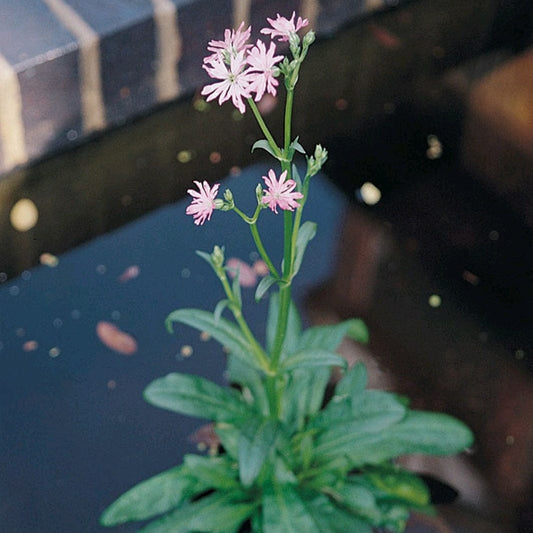
Plants arrived in great condition and very promptly. Well established - much better than the ones I got at my local garden centre.
Monica Spence
| 24 May
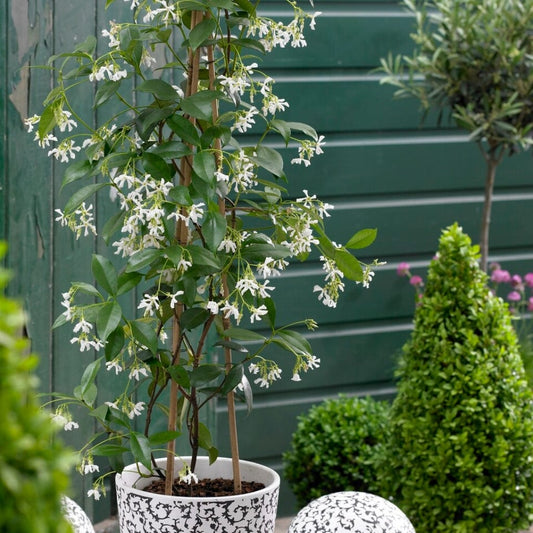
Yet again this company delivered good healthy plants, exactly as shown in photos, well packaged and within delivery time quoted. Recommend!
Jacqueline Burgess
| 2 Jun
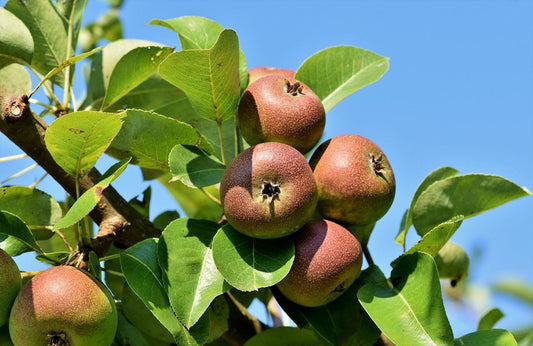
I continue to be so impressed with Roots. Their customer care, knowledge of their subject: from planting hedges to pruning roses and more, has been a great support.
Judy Lane
| 23 Oct
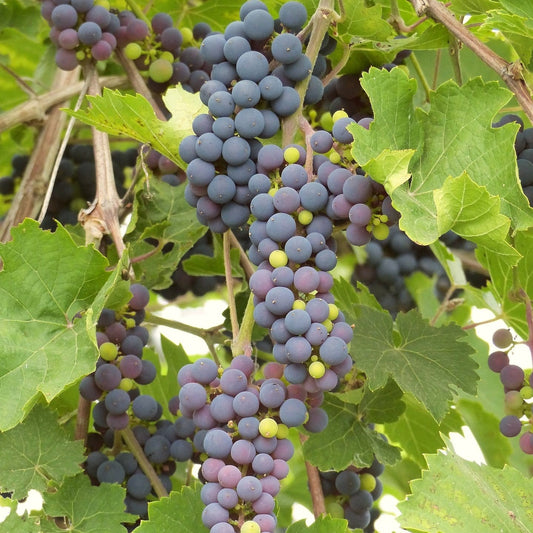
The plant arrived looking vigorously healthy, which brings a smile to your face, extremely well protected in its packaging.
Martyn Hill
| 5 Jul
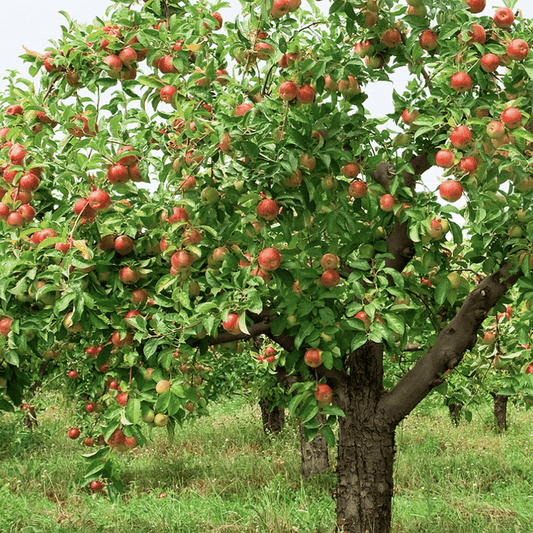
As a non-gardener, I found my whole experience brilliant. Great information & advice available on the website, great range of products & prices are brilliant.
John-Paul
| 22 May

Wonderful plants and great customer service... really surprised to find that the plants are better than those you would get at your local garden centre.
Gavin Wilcock
| 8 Nov
Fighting plastic waste
Delivering fresh from the nursery
Supporting UK growers

